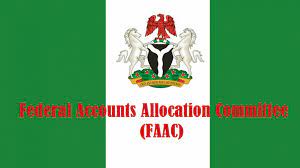The electricity generation companies (GenCos) Monday queried the failure of the federal government to make plans for how to fund the N1.7 trillion shortfall in either the annual budget or in the 2015 Multi Year Tariff Order (MYTO).
The power generating companies also asked the Nigerian Electricity Regulations Commission (NERC) to address the issue of previous failed reviews and state how to make a difference in the current review.
Recall that the Nigerian Electricty Regulation Commission (NERC) had recently revealed its plans to stop the payment of any form of tariff support except for the less privileged in the sector by 2021.
In a memo titled: ” Consultation paper on the proposed extra -ordinary tariff review of the MYTO -2015 Tariff Order for the Nigerian Electricity Supply Industry (NESI)”, NERC said it had intervened in shortfall payment of N701billion in 2017 and 2018 and another N600billion approved between 2019 and 2020, totaling N1.7trillion support for the sector since 2015.
It submitted in the memo that “While the intervention so far represents an unsustainable fiscal burden on the Nigerian treasury, the total tariff-related revenue shortfall for all market participants for the period 2015 – 2019 is in the sum of ₦1.72trillion.”
But GenCos in a statement issued by the Association of Power Generation Companies (APGC), and signed by its Executive Director, Barrister Joy Ogaji, asked the FG to state its funding initiative for the shortfall.
Ms.Ogaji said: “Generation companies have raised concerns regarding the tariff review, scheduled to be effective on the 1st of April, 2020. The GenCos concerns relates to the fact that NERC has not captured all the ‘changes’ in the relevant macroeconomic variables and available generation capacity in updating the operating MYTO-2015 in line with the provisions of the MYTO Methodology.
“The seeming gaps are shown through the four parameters considered in the minor review namely: inflation, interest rates, exchange rates and generation capacity as it affects or impacts our business.
“Dealing with Market shortfall holistically: We are concerned about the financing of the shortfalls, given that there is no provision in the 2019 or 2020 budget. What is the PSRP financing initiative?
“What is not clear is who will take charge of the financing plan. Do these plans and facilities even exist? If so, what are the terms under which they were created, if not in existence, right now, who is working to create them and when would they be ready?”
She continued: “Equitability: DisCos Remittance Water fall for year 2020 of the minor review indicates that GenCos on average will receive 36% of their revenue requirement while DisCos will receive 100% if they fulfil their obligations.
“Why this difference? What’s the justification behind GenCos getting 36% of their revenue requirement, while the DisCos receives a 100% if it just manages to make the minimum remittance which from our investigation Discos have not adhered to?
“Framework for monitoring and enforcement: The regulator needs to address the issue of previous failed reviews and how this review will be different in terms of effectiveness/implementation. The GenCos will further appreciate if the regulator can critically look into the following:
“The issue of the requirement for DisCo revolving letter of credit to NBET. Is any modality in place to ensure that the DisCos provide the required three months revolving letter of credit? If not, this review is as good as the rest!
“There has to be an effective mechanism for the payment of revenue shortfalls outside the current best endeavour conjecture. Payment delayed is payment denied, and the cost of such delays should serve as an input to the tariff in the form of cost to the GenCos (considering the time value of money).
“Are there back-to-back data from the DisCos, including trend analysis, to support the ability to distribute such levels of energy? Relative to: Proof of DisCos investments in capacity improvements tied to such levels of energy delivery improvements.”



